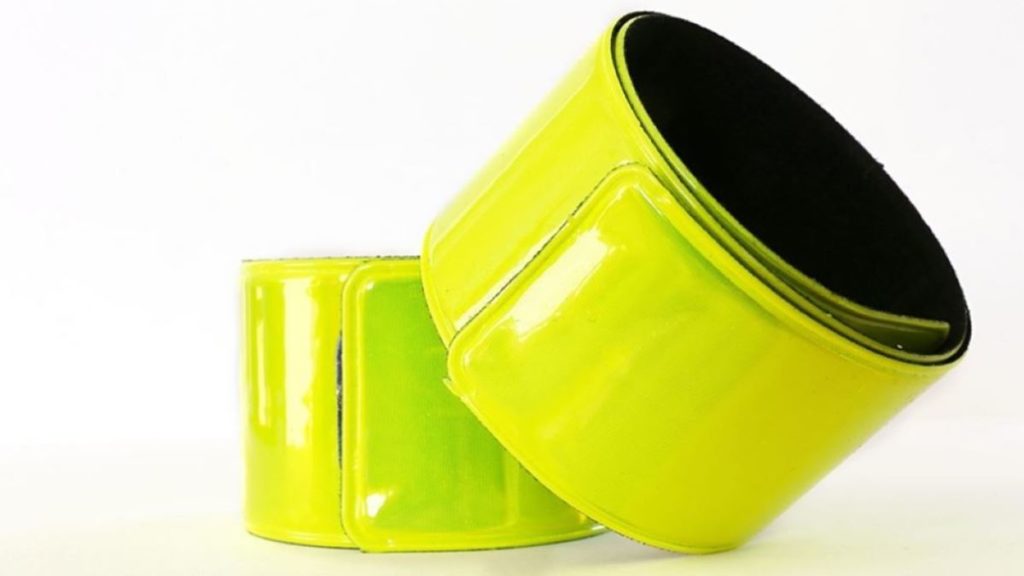Reflective tape is a strong and long-lasting adhesive tape that is excellent for visibly identifying areas and objects. This pressure-sensitive, engineering-grade tape is simple to see. It can withstand extreme weather conditions, such as heat and rain.
Restaurants and cafes can use reflective tapes to mark outside waiting areas and dining sections, considering new laws instructing companies to design their spaces for social distancing.
RELATED ARTICLE: WILL LIFE EVER GET BACK TO NORMAL?
Using Reflective Tapes
Reflective tapes are primarily used for safety purposes. Police, ambulance, fire service vehicles, and uniforms are marked with reflective tape. Besides marking pathways and low-hanging obstacles or buildings, these tapes also mark ledges, fences and posts. Companies use them on industrial equipment.
Reflective tapes mark autos and bikes, helmets, children’s clothes, and walking sticks for the blind and elderly. In addition, businesses use them to promote and sell their goods and services.
How Do Reflective Tapes Work?
You have seen reflective tapes before. But have you ever given any thought to their mechanics? Reflective tape works by reflecting light from a source that illuminates it.
Materials in the tape bend and refract the light back toward the direction it came from. Reflective tape can reflect multiple beams in different directions. As a result, reflective tapes can be difficult to photograph. This is because there is a significant amount of light return even if you position your camera at a sharp angle to the light.
On the other hand, you can only see the tape’s reflection if your eyes are aligned with the light. To get an idea how this works, the next time you pass a semi-trailer truck on the road, pay attention to how the reflective tape lights up from a distance.
Types of Reflective Tapes
A wide variety of reflective tapes is now available, each with a unique brightness and other characteristics that meet the needs of a specific application. Consider the following examples:
Engineer-Grade Reflective Tape
A retro-reflective substance is used in this high-quality, high-gloss tape. It adheres to a wide range of flat surfaces, including glass and other pressure-sensitive areas. Road signs also take advantage of this technology, as it increases nighttime visibility for drivers.
High-Intensity Reflective Tape
Micro-prismatic retro-reflective material is used to make this high-quality tape. It can tolerate temperatures ranging from -40°F to 180°F with ease. In most cases, it lasts a decade before requiring replacement.
Key Uses of Reflective Tapes
Businesses, industries, parking lots, and other locations can benefit from reflective tapes. It can ensure health and safety considerations in the workplace as well.
Warehouse Floors
Industrial settings are safer because of the use of reflective tapes. They identify safety zones or potential hazards. For example, they can mark clear zones around high voltage equipment, protecting high voltage equipment from drop dangers. Businesses also use them to mark emergency escape routes and similar areas.
Reflective Tape on Warehouse Clothing
Reflective tape on the outside of jackets or shirts can be a tremendous help for those who wish to be more visible when exercising at night or working in areas with heavy traffic. People who work in large industries with heavy gear and equipment can also benefit from reflective tapes.
Construction Sites
In the construction business, reflective tapes provide safety precaution. There are various reasons why construction workers may have poor visibility. Construction trucks carrying a large number of goods might collide with one another without these tapes. Reflective tape is an excellent choice both for designating locations and marking personnel clothing.
RELATED ARTICLE: PPE PROTECTS WORKERS IN HAZARDOUS INDUSTRIES
Dangerous Objects
You can use reflective tape to increase the visibility of low entrances, stacked goods, and clearances at home or work. For example, use them in garden shelters, on garage doors you often keep at half-height, and on overhead pipes near walkways. Following these guidelines at home and at work can help reduce the risk of significant head injury.
Reflective Tape on Vehicles
When you’re running a business that relies on vehicles such as trucks and trailers, you realize how important it is to keep such vehicles on the road and in top condition. Vehicle downtime, reduced efficiency, and financial losses can occur when one of your vehicles is in an accident.
When you think about the costs of accidents and the ensuing downtime, you realize that any effort to reduce accidents is worthwhile. But you can help other drivers see your trucks and trailers at night and from a distance by applying reflective tape to the back and sides of your vehicles.
RELATED ARTICLE: DRIVER SAFETY: STEPS TRUCKING COMPANIES CAN TAKE
Posts and Bollards
Reflective tapes can be used in various ways, including on or around bollards and other safety devices. They are also invaluable in low-light places such as underground parking garages.
Railings, Steps, and Ledges
A reflective tape is a valuable tool for highlighting unexpected landscape changes. With a tiny strip of reflective tape on the edge of a step, for example, people will be more attentive and less likely to trip.
How and Where to Apply Reflective Tape
There should be no bumps or raised edges where you’re applying the tape.
Also consider the tape’s ability to withstand abrasion. For example, you can use reflective tape on a stairway’s flat or vertical surfaces. People will cause some abrasion by stepping on it, but if you use abrasion-resistant tape it will serve you for a long time.
Conclusion
Besides the more typical uses, such as road safety signs, work gear, and vehicle marking, the list above illustrates that reflective tape has plenty of uses. It is an integral part of modernization and keeping people safe.
